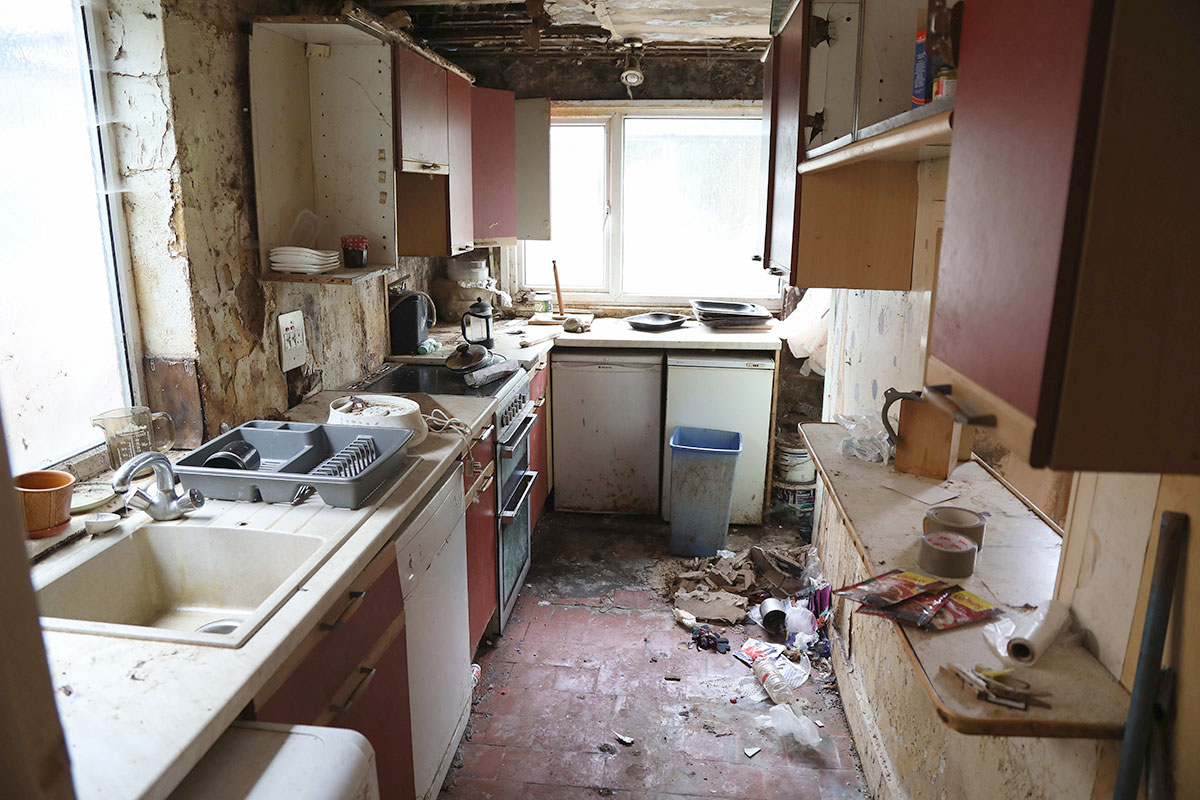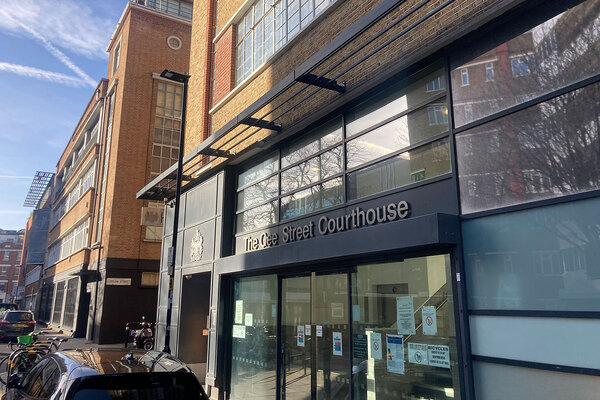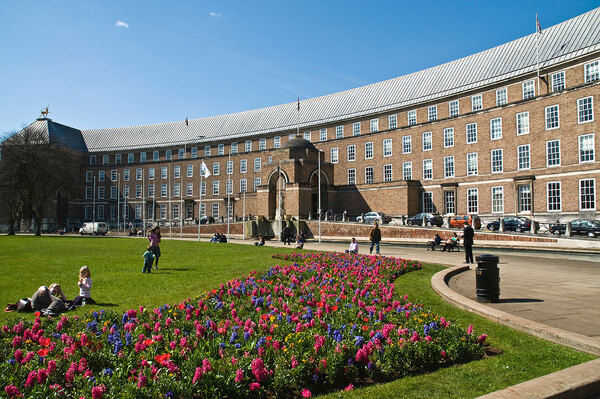You are viewing 1 of your 1 free articles
Helping vulnerable homeowners pay for essential repairs
Some homeowners struggle to pay for essential works to their homes. Kate Youde reports on a scheme which brings investors on board to supply the cash
How the kitchen in Sandra’s* house used to look
Sandra* has lived in the same 1930s semi for more than 30 years but it does not feel like it. “When I come around the corner I think, ‘that’s not my house’,” she says.
This is because the property recently underwent a £190,000 transformation as part of a pilot for a home improvement scheme aimed at older homeowners living in houses in disrepair. “It’s a brand new home,” she says.
Inside Housing has come to Whitton, near Hounslow in south-west London, to find out more about the project, which enables people to take out lifetime mortgages to cover the cost of work, and how other low-income families might benefit.
Sandra opens her front door wearing a blue T-shirt that advertises her love of the TV show Game of Thrones and welcomes us into her newly decorated lounge, complete with fresh magnolia walls, blue carpet and grey sofas.
Before the renovation, she did not want to invite anybody into the house she shares with her husband and four grown-up children, two of whom used to sleep in the lounge. “Even my [26-year-old] youngest son wouldn’t have any of his friends round because it was in such a state,” says Sandra, 64, who works as a supermarket cashier on a zero-hours contract. Her husband is retired and two of her children are unemployed.
The problems with the house started about five years ago when the central heating packed up and the family could not afford the £800 repairs.
Damp spread down from the roof and from the ground up, giving Sandra’s daughter bad asthma. Water started leaking through the kitchen’s flat roof; the washing machine and dishwasher also broke down.
Conditions were mouldy, dirty and depressing, says Sandra. “It was a slow deterioration over the years because we felt we didn’t have the money to decorate or anything like that.”
It became “too much”. “We had a back door for the kitchen that was all rusted and we didn’t want to use it in case the rest of the kitchen fell down,” she says. “And then it did.”
“It was a slow deterioration over the years," Sandra
Sandra and her husband, who had paid off the mortgage on the house, were twice turned down for equity release because of the poor condition of the property. Then three years ago, after the kitchen ceiling collapsed, her brother-in-law suggested she contact Age Partnership, which offers financial advice to over 50s.
The company referred her to the social enterprise London Rebuilding Society (LRS).
The home was one of two LRS did up during a pilot, launched in 2016, with one of the country’s largest equity release providers of its Home Improvement Scheme. Neil McClenaghan, head of housing for LRS, says the project fills a “big gap in the market” by helping “cash poor, equity rich” older people living in poor conditions, who cannot otherwise access financial help, to make necessary repairs or adaptations to their homes.
LRS estimates there are 100,000 people within the M25 in that situation. It aims to help 1,900 people – based on two older people per house – over the next five years. It will start in the South of England but hopes to take the project nationwide.
The organisation will find potential clients through local authorities’ social services and charities, and introduce them to Age Partnership, which will take the homeowners through the financial and legal implications of a retirement mortgage.
This is a mortgage that allows a homeowner aged over 55 to borrow a percentage of the value of their home depending on their age.
Under LRS’s scheme, the interest rate is fixed for life (currently at 5%) and is compound, meaning it is added every year to the cost of the mortgage. However, borrowers can pay it back as they go if they can.
The money borrowed only has to be paid back when the homeowner sells the property, moves into care or dies.
There is a negative equity guarantee so that, if the market value of the house falls below the amount borrowed, the value to be paid back does not exceed the new value of the property. Inheritance protection also allows a homeowner to give their heir the first option to buy the house.
After discussing the scheme, Sandra’s family decided it was their only option.
Under LRS’s scheme, the interest rate is fixed for life (currently at 5%) and is compound, meaning it is added every year to the cost of the mortgage
“If an environmental [health] officer had come around on a visit I think they would have had to condemn the house because it was unsafe,” says Mr McClenaghan. “There were electric sockets with the wires hanging out in the kitchen and it was damp.”
He says the then three-bedroom property was worth £200,000 in its rundown state. LRS had the property valued based on its projected completed state and the equity release mortgage provider used that valuation of £560,000 to give Sandra a loan of £190,000. This covered the cost of the renovation, which included adding two new bedrooms (making five in total), a new en suite, rewiring, a new kitchen, plastering, decorating, new furniture, new central heating, a new conservatory and repairs to the roof.
The family of six, plus their seven cats and one dog, rented a four-bedroom house between August 2017 and February this year while the work was carried out. These costs were also covered by the £190,000 loan.
After the kitchen area was transformed by a social enterprise scheme
LRS takes on the risk in projects, employs contractors to do the work on a fixed-rate contract, and assigns a client relationship manager to the homeowner. “We do all the hand-holding, particularly if they are vulnerable people,” says Mr McClenaghan. “We find the [rental] accommodation, we look into their benefits and pensions to make sure they are getting the maximum amount of money from the state. A lot of them don’t realise they are not claiming everything they should.” LRS also makes sure the property is insured.
The social enterprise charges a 16.5% project management fee, and part of the professional fee is covered by the loan. This will enable LRS to generate a surplus of £6m in the next five years, which it will reinvest to support more clients.
But LRS is not the only one making money from the scheme. It recently raised £240,000 from investors through positive investment platform Ethex, which has raised around £65m for about 70 organisations since 2013. Investors put in money to projects promising a financial and social return.
The social enterprise charges a 16.5% project management fee, and part of the professional fee is covered by the loan
LRS, seeking to raise working capital, offered investors an annual return of 8% interest on an unsecured loan, which is eligible for social investment tax relief (SITR) from the government at 30%. Investors receive interest only for the first three years and then two years of capital repayment. The minimum investment was £5,000.
As it was eligible for SITR, the offer qualified for match funding from Big Society Capital, which invested a further £240,000 on the same terms as the other investors.
The offer closed within two weeks of going live in March – compared with the typical timeframe of six to eight weeks – and was filled by 10 investors. Josh Brewer, senior business development manager at Ethex, says the quick result was down to the “decent return” offered and the fact LRS had lined up a couple of investors in advance. “It was a good investment proposition for people,” he says. “The social impact was really strong.”
Mr Brewer says offers relating to housing are “potentially an area of significant growth” for positive investment, driven by community land trust activity. “The feeling is there’s quite a big proportion of these starting to come through but they haven’t quite hit the ground yet,” he says. “But they will do in the next couple of years or so.”
Ethex has already worked with community land trusts in Leeds and London, as well as offers relating to supported housing and community investment. Mr Brewer says projects involving housing or affordable homes are starting to come to the platform and that its investors are “very socially engaged” so recognise supply and affordability as a key issue.
“There’s clearly a need for more investment and from different sources,” says Greg Campbell, partner at consultancy Campbell Tickell and advisor to social impact investment company Funding Affordable Homes (FAH). “The traditional sources – grant, loans and bonds – will obviously continue and are important [but] they won’t themselves provide sufficient investment to meet demand for affordable housing.
“There’s clearly a need for more investment and from different sources,” Greg Campbell
"At the same time, there are a lot of investors out there that would be interested – clearly already are interested – in getting into this space.
“There’s a question about how many are committed to social investment as opposed to just looking for a new asset class to invest in. What we have been finding is there are institutions and individuals who have got that interest and commitment.”
But what are the ethics of making money off schemes involving potentially vulnerable people?
Mr Campbell says it is a question of what constitutes social investment. He says a responsible organisation will seek an appropriate assessment of whether a project is achieving a social purpose. FAH has the social value of schemes assessed independently before they are signed off for investment.
Mr Brewer says the New Economics Foundation thinktank has a track record of calling out exploitation and has previously assessed and validated LRS.
“The key thing is it does have a high impact… They are tackling these very worst-case scenarios,” he says.
*Name has been changed














